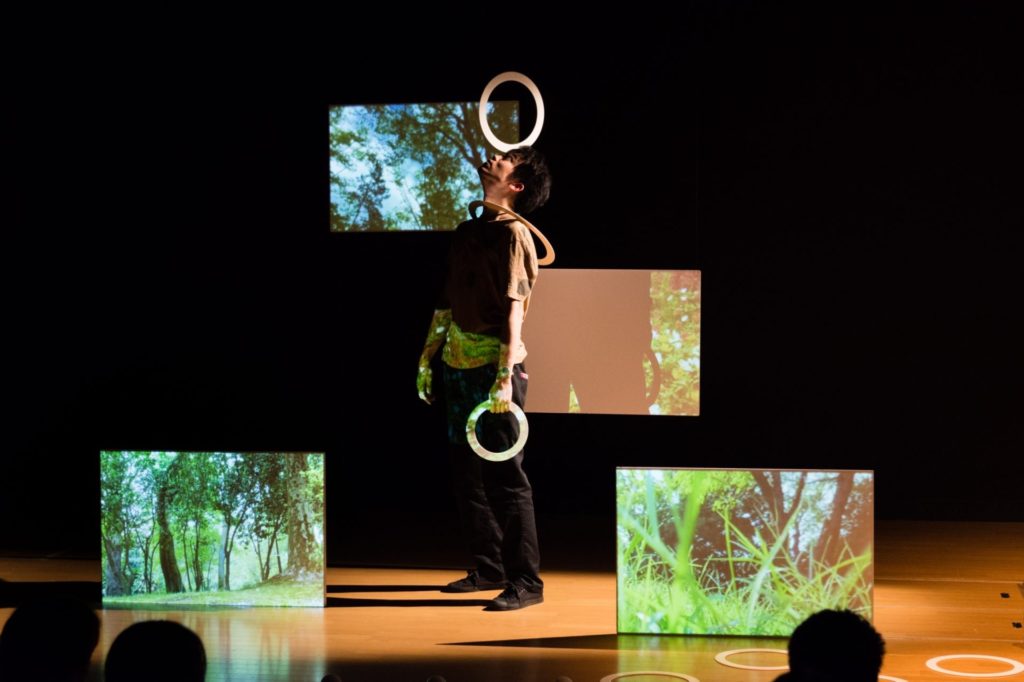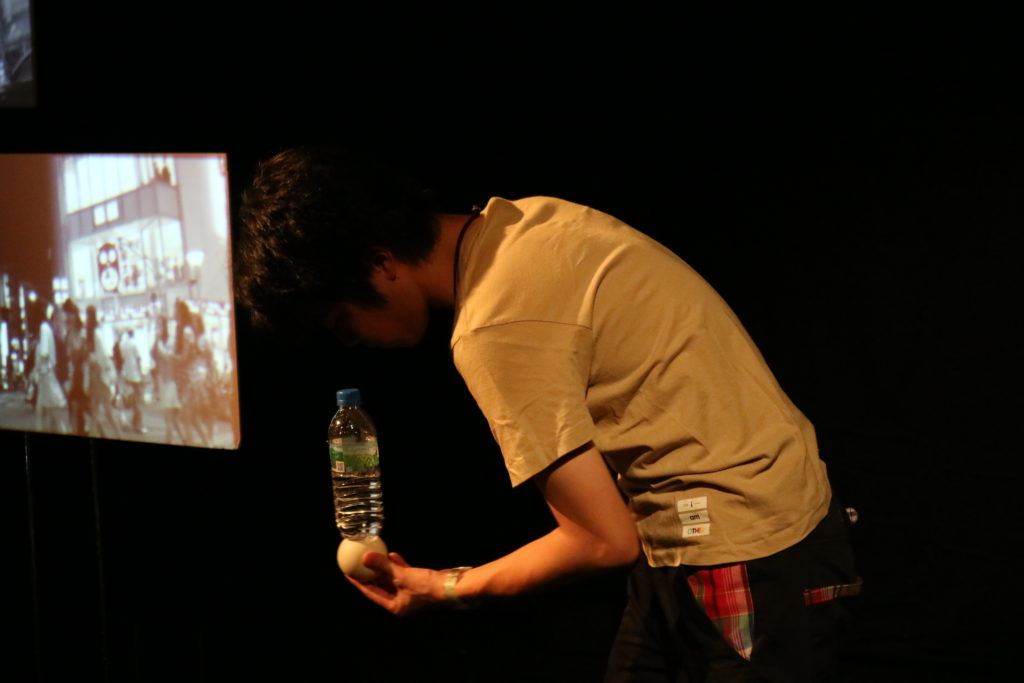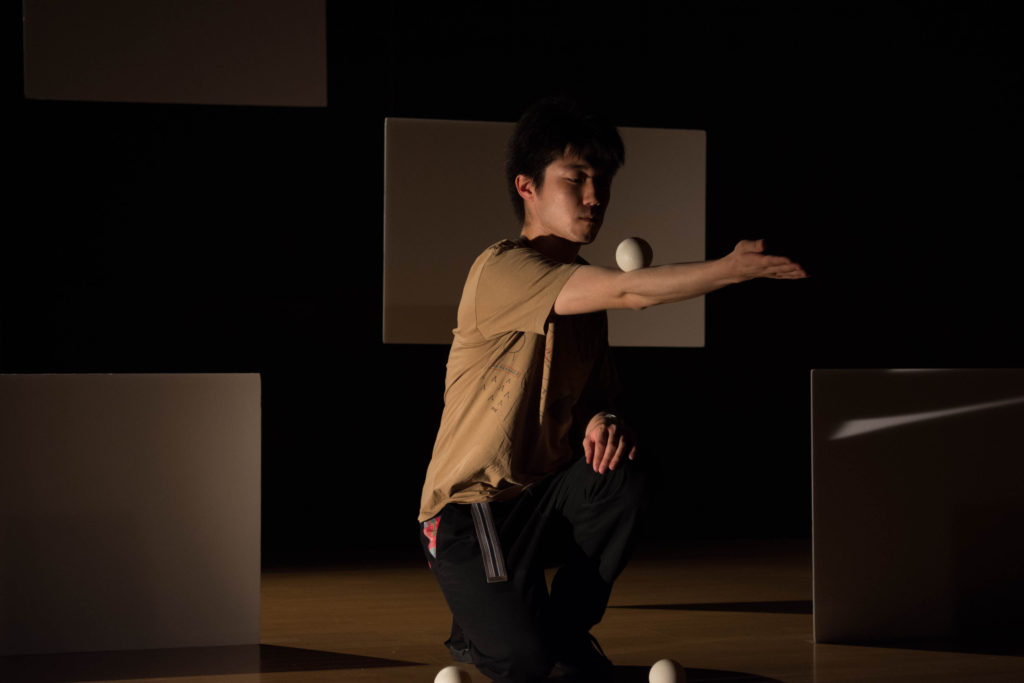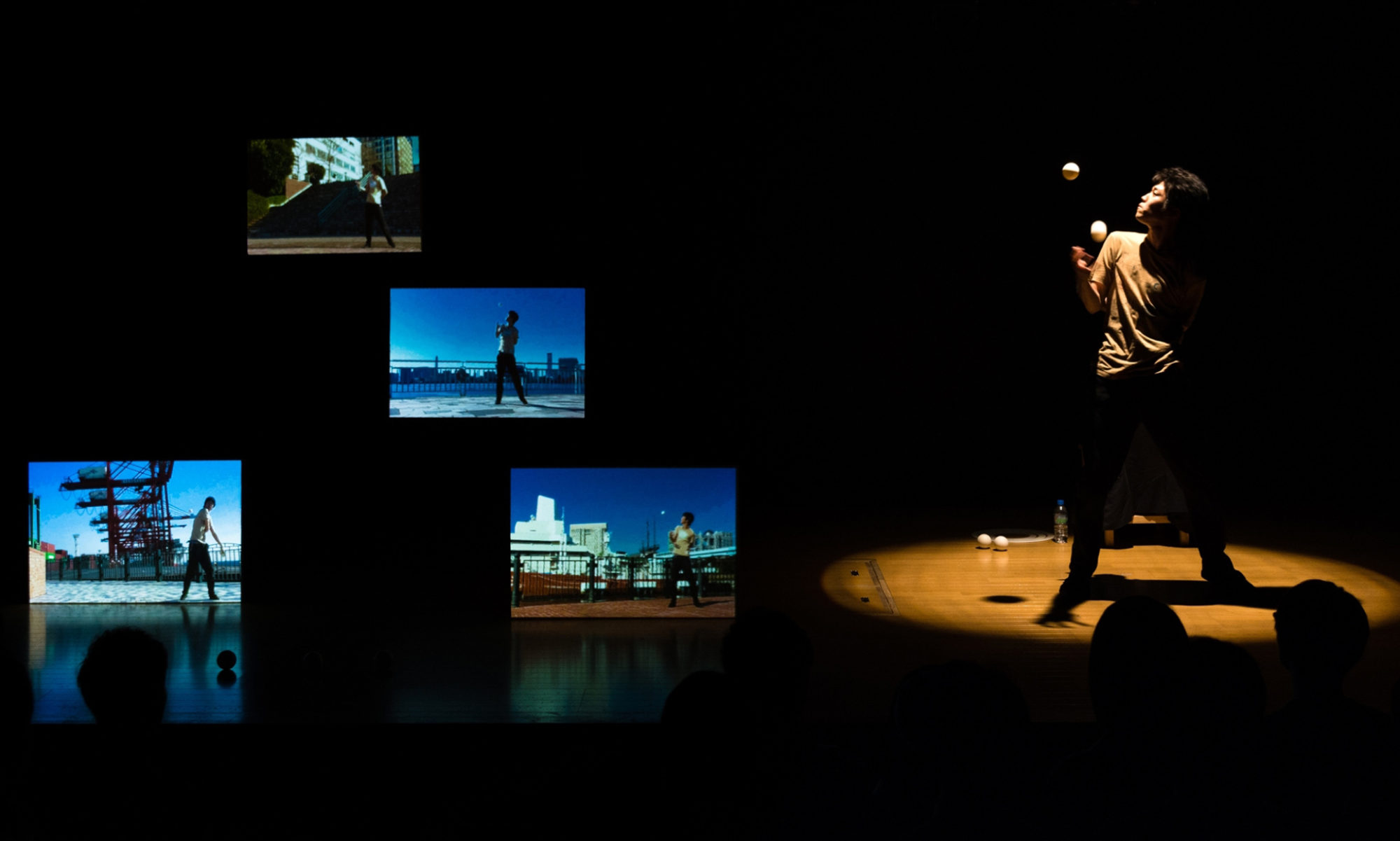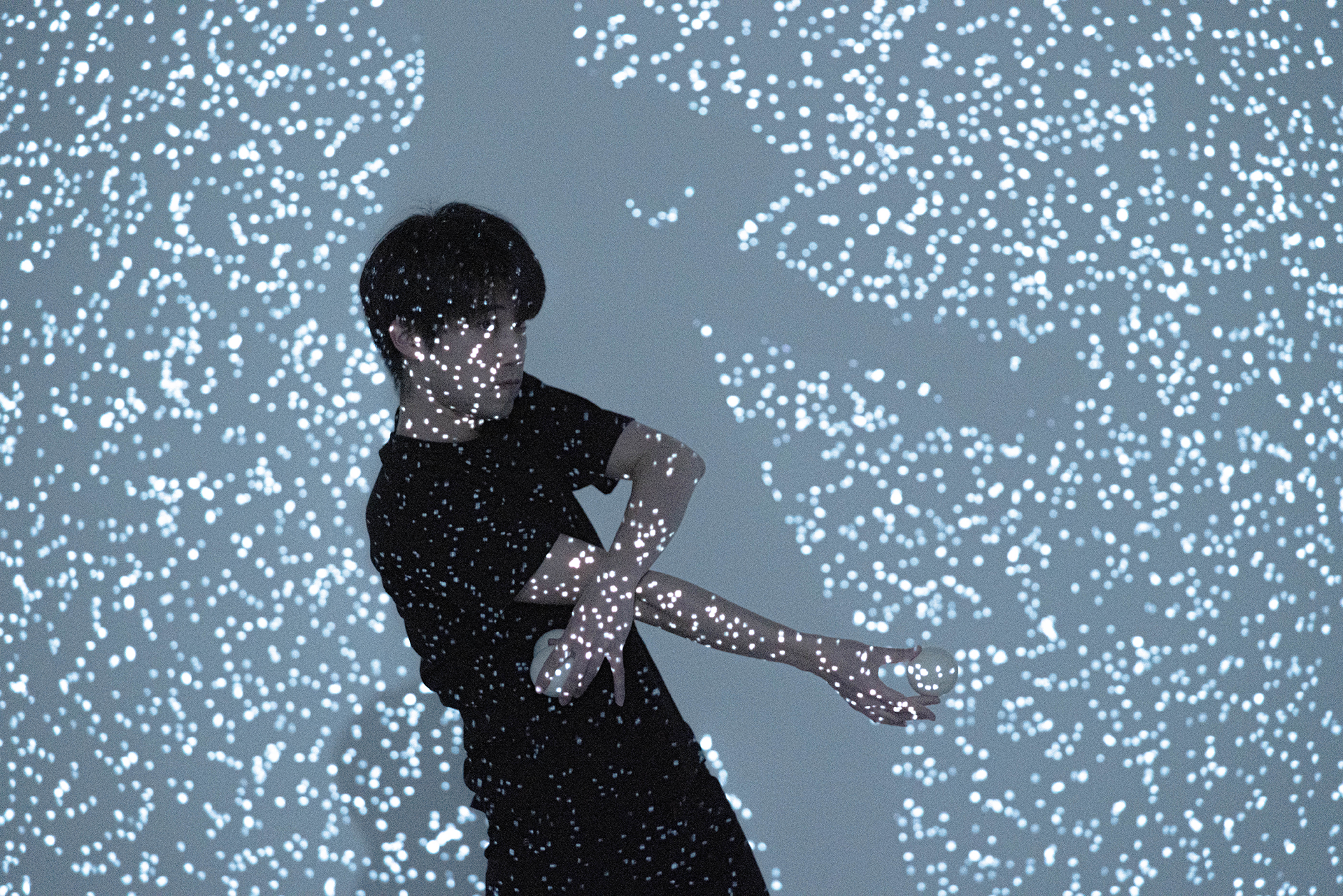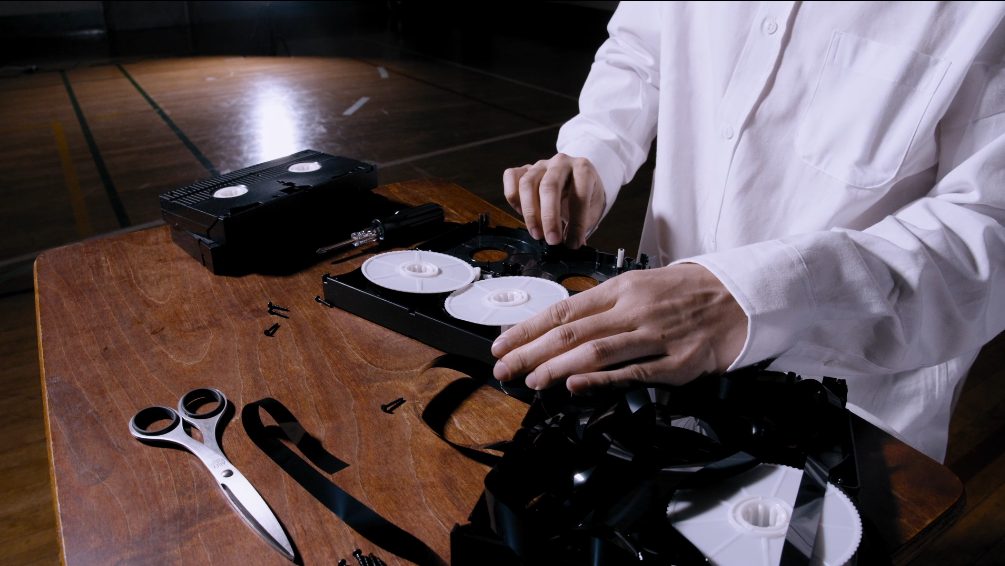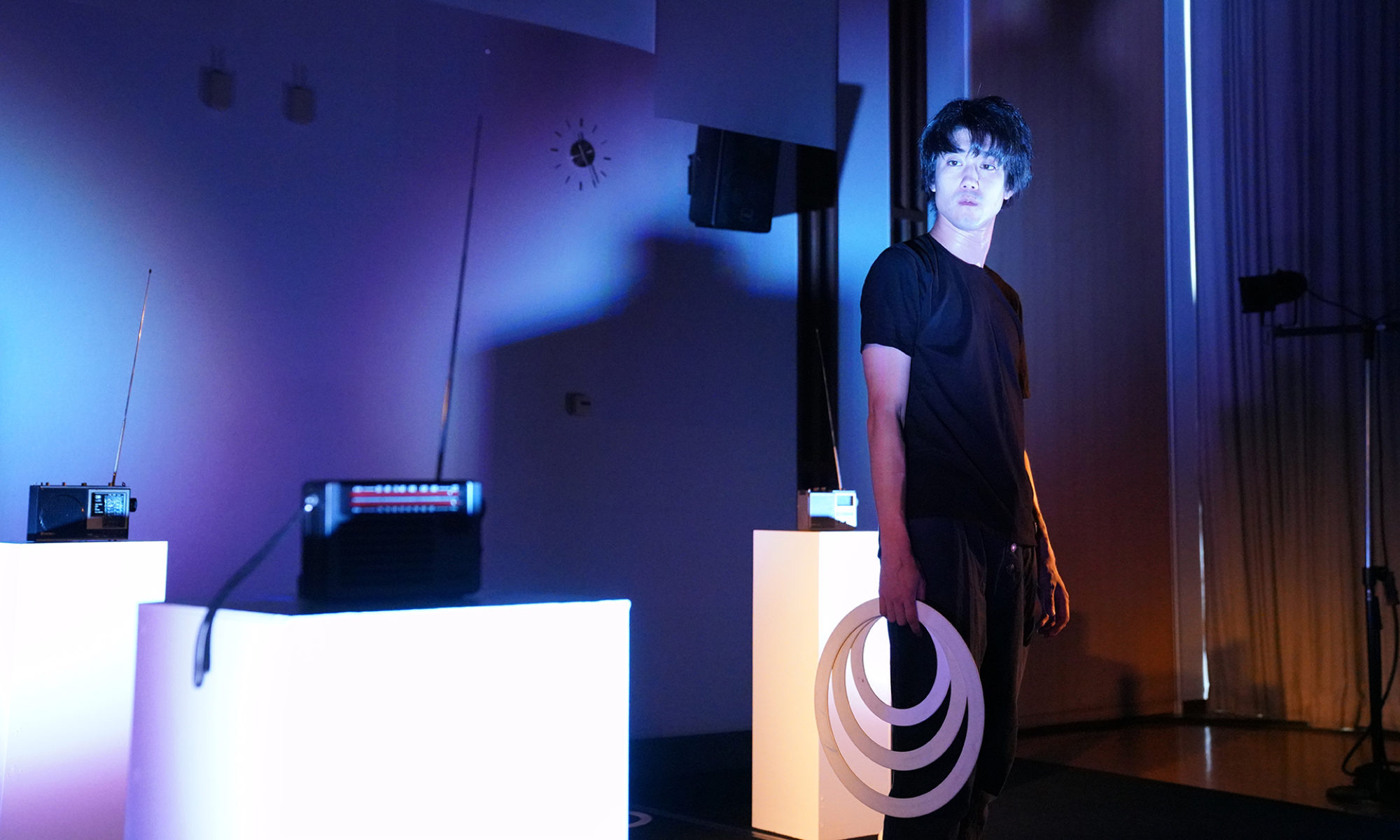ジャグリングを深く考え続けてきた岡本にとって、ジャグリングとは単なる曲芸技術ではなく、「ものと身体の関係性を考える視点」にまで昇華されていた。
ものだけでなく、身体だけでなく、その両方の関係が必要であること。空間に対して身体だけ・ものだけという「点」でなく、その二つ以上の要素がつながる線となり、その線が動くことで見る人に「空間」が立ち上がる。ジャグリングはこのように、他のジャンルの芸能よりも、「空間」という認識を作りやすい。そしてその空間は、ものや身体の動きによって質感が変わる。
その力を信じ始めた岡本が作成したのが本作である。
本作では舞台上に4つのスクリーンを配置。主に使われるのは空港や草の中など誰もがどこかで見たことのあるような風景映像。4つのスクリーンに断片的に映像を映すことで、鑑賞者が想像で補完する=鑑賞者自身の記憶が投影されることを狙った。さらにその上に、ものと身体の関係の質感を重ねることで観客の記憶を異化する、「知っているのに知らないような風景」を作り出そうと試みた。
For Okamoto, who has continued to think deeply about juggling, juggling is not just an acrobatic technique, but has been elevated to “a perspective that considers the relationship between things and the body.
It is not just about things, not just about the body, but about the need for a relationship between both. The space is not a “point” where only the body and objects are in relation to the space, but a line where these two or more elements are connected, and the movement of the line creates a “space” for the viewer. In this way, juggling is more likely to create the perception of “space” than other genres of performing arts. And that space changes in texture depending on the movement of objects and bodies.
Okamoto began to believe in this power and created this work.
In this work, four screens are placed on the stage. By projecting fragmented images on the four screens, Okamoto aimed to create a projection of the viewer’s own memories, which would be supplemented by the viewer’s imagination. Furthermore, by overlaying the texture of the relationship between objects and the body on top of the images, the artist attempted to create a “landscape that is known but unknown” by altering the viewer’s memory.
Direction/Performance : Teruki Okamoto
Production : Room Kids
